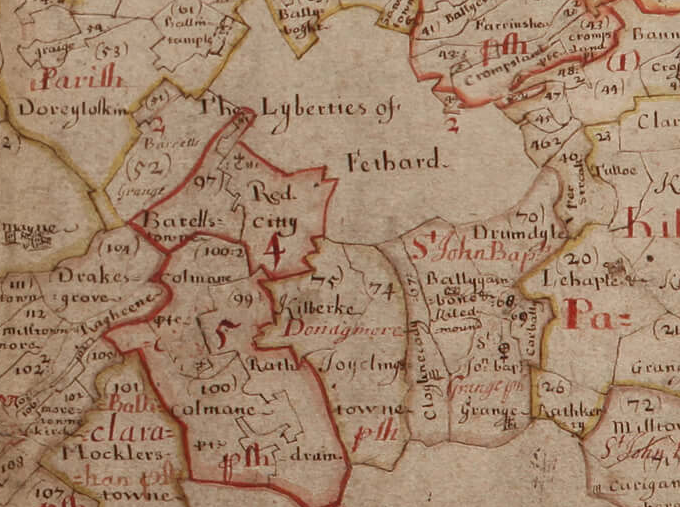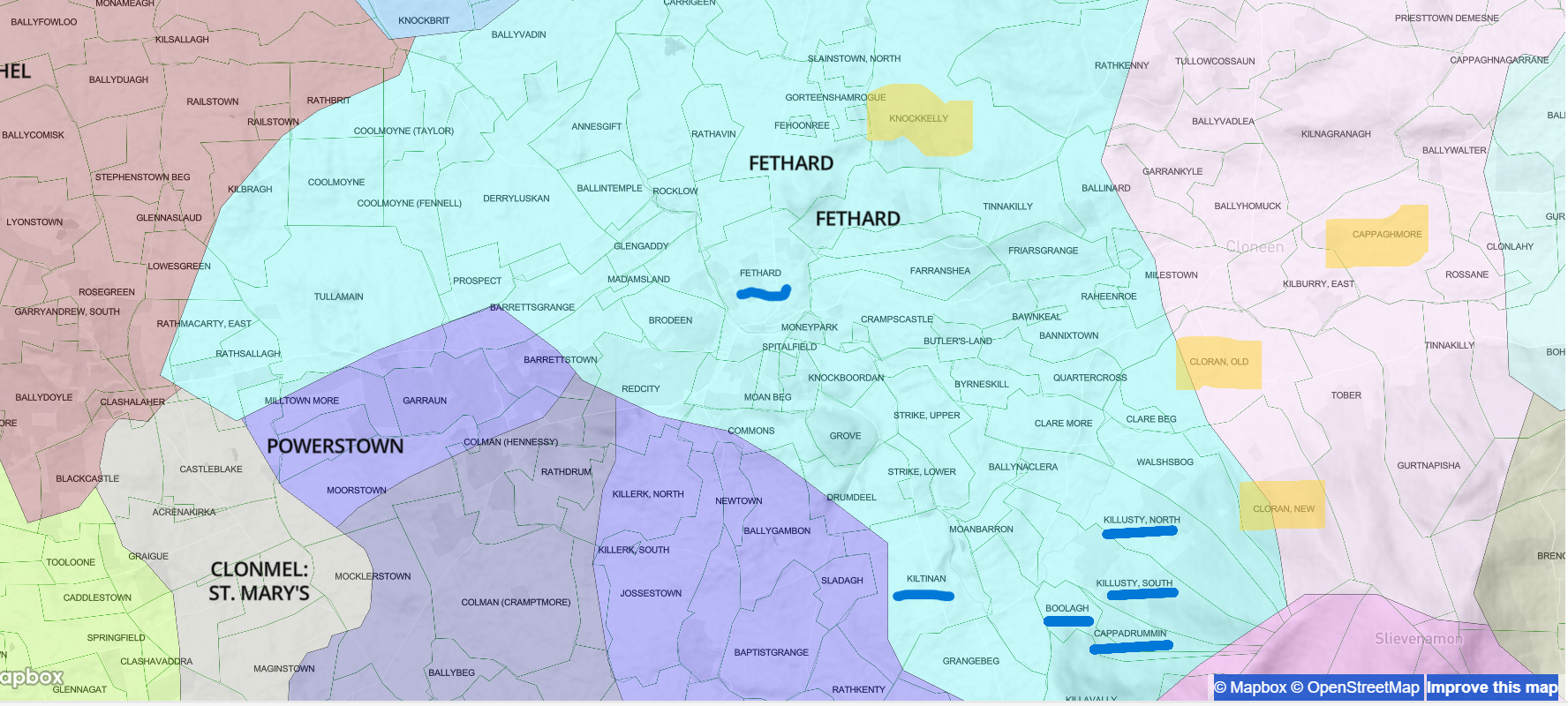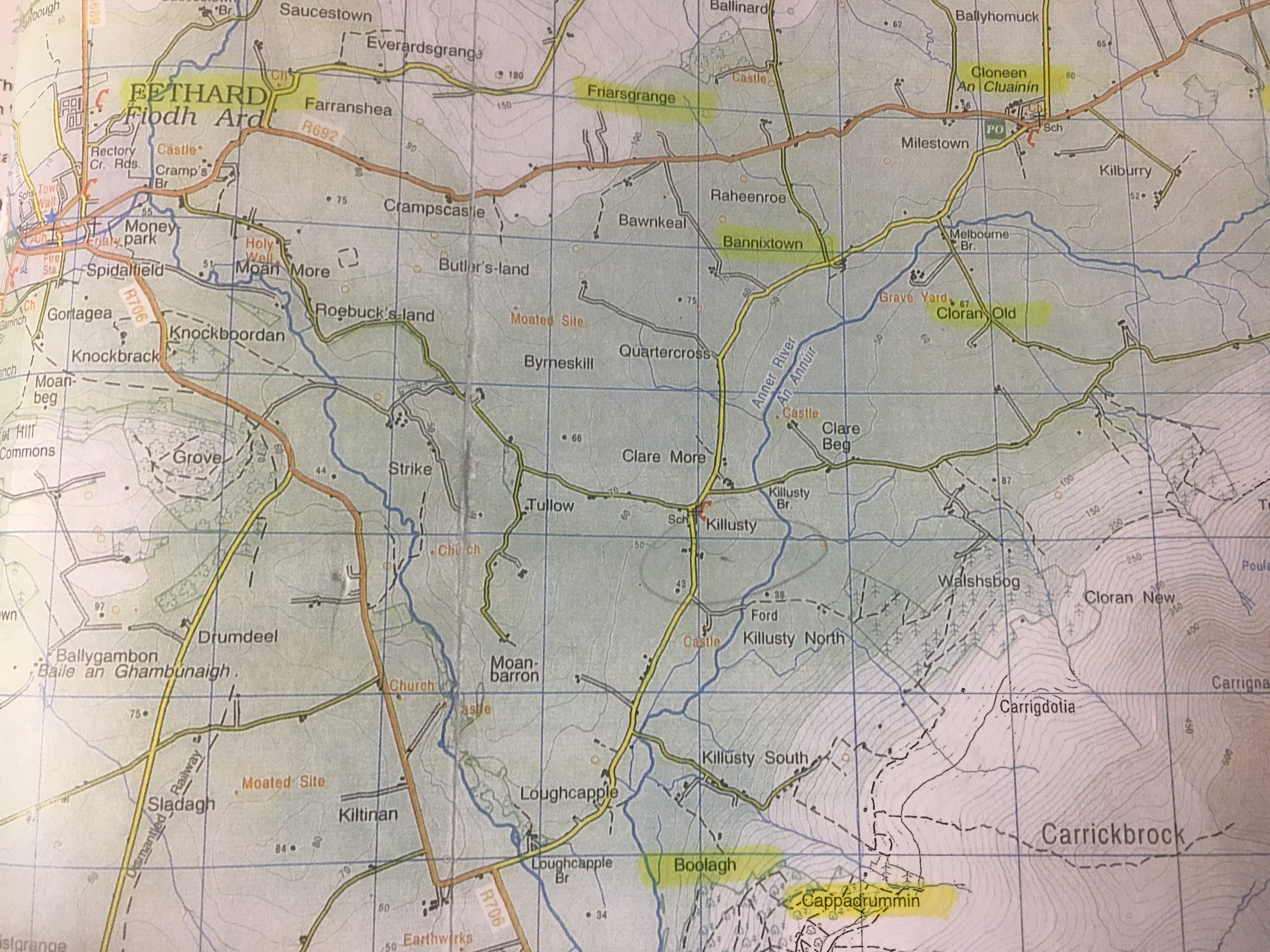As described in the Irish Research page, the tax records of 1666/7 Hearth showed a James Head at Rathdangin. The map below is from this time period and shows Rath-dragin south west of Fethard township. This I believe is the place referred to in the 1666/7 records.
Fethard is in the barony of Middlethird which in the 1659 census only showed 8 Headen and 5 O’Hea families. They were either counted as part of the O’Hea numbers or ignored due to their low usage.
By 1766, an Edm Head was in the village of Killusty in the parish of Kiltinan, Fethard. He is probably a descendant of the family in Rathdrangin in 1666.
By the 1800s, descendants were in the following areas:
| Cappa droma | Cloran | Cloran | Kilnag ranagh | Drangan | Fethard | Graigue | Knockelly | |
| 1820 | Michael | Edmond | James | William | ||||
| 1830 | Michael | Edmond | James | William | ||||
| 1840 | Michael | Margaret | Mary | John | William | |||
| 1850 | Richard | James | Michael | John | Thomas | |||
| 1860 | Richard | Catherine | Thomas |
I have found a James Hayde in extracts of the 1821 and 1831 census for St Mary’s Clonmel. It records him as being in Bagwell’s Row in the Western Suburbs of Clonmel. He was an outdoor servant. He probably married (as Hade) in Ardfinnan parish in 1835. This parish is west of Clonmel. I am not sure how he links to the families above.
These places are highlighted in the maps below. The first one is the southern area and the second one is more northern and includes Drangan.
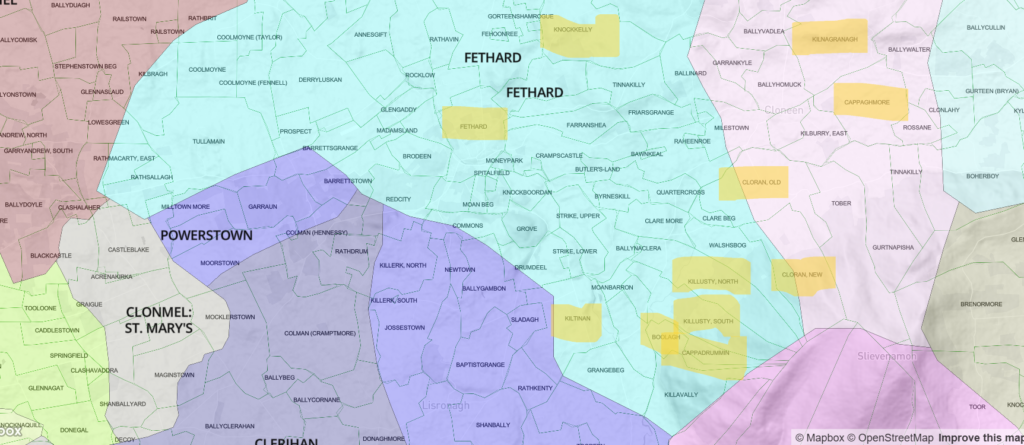
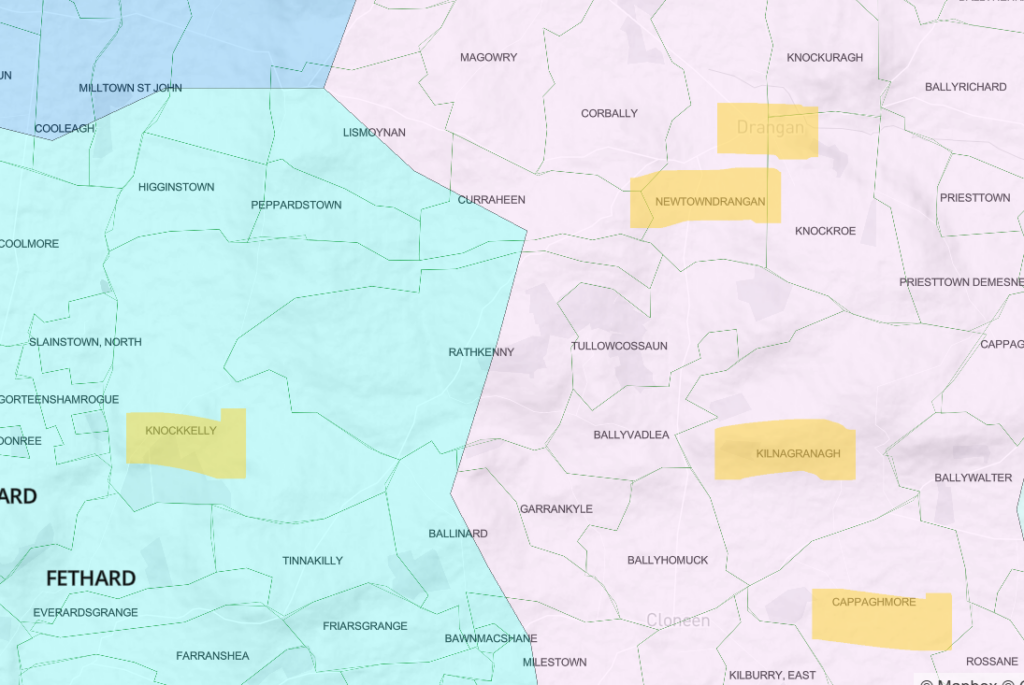
The Fethard, Drangan and Gambonsfield parish pages that follow (and can be accessed by clicking on the links) cover the details of these families. These show how Head, Heade, Hayde and Hade were variously used in the parish records.
The page on Drangan, Cloneen and Killusty parish records shows how complicated tracking families can be with the constant changes in parish boundaries.
It seems probable that these families originate from the James Head in 1666/7. What is unclear is the linkage (if any) to the Head/Heade/Hayde/Hade families elsewhere. DNA testing has as yet shown no linkage however this is only based on one sample. More DNA testing is required to prove/disprove a link.
